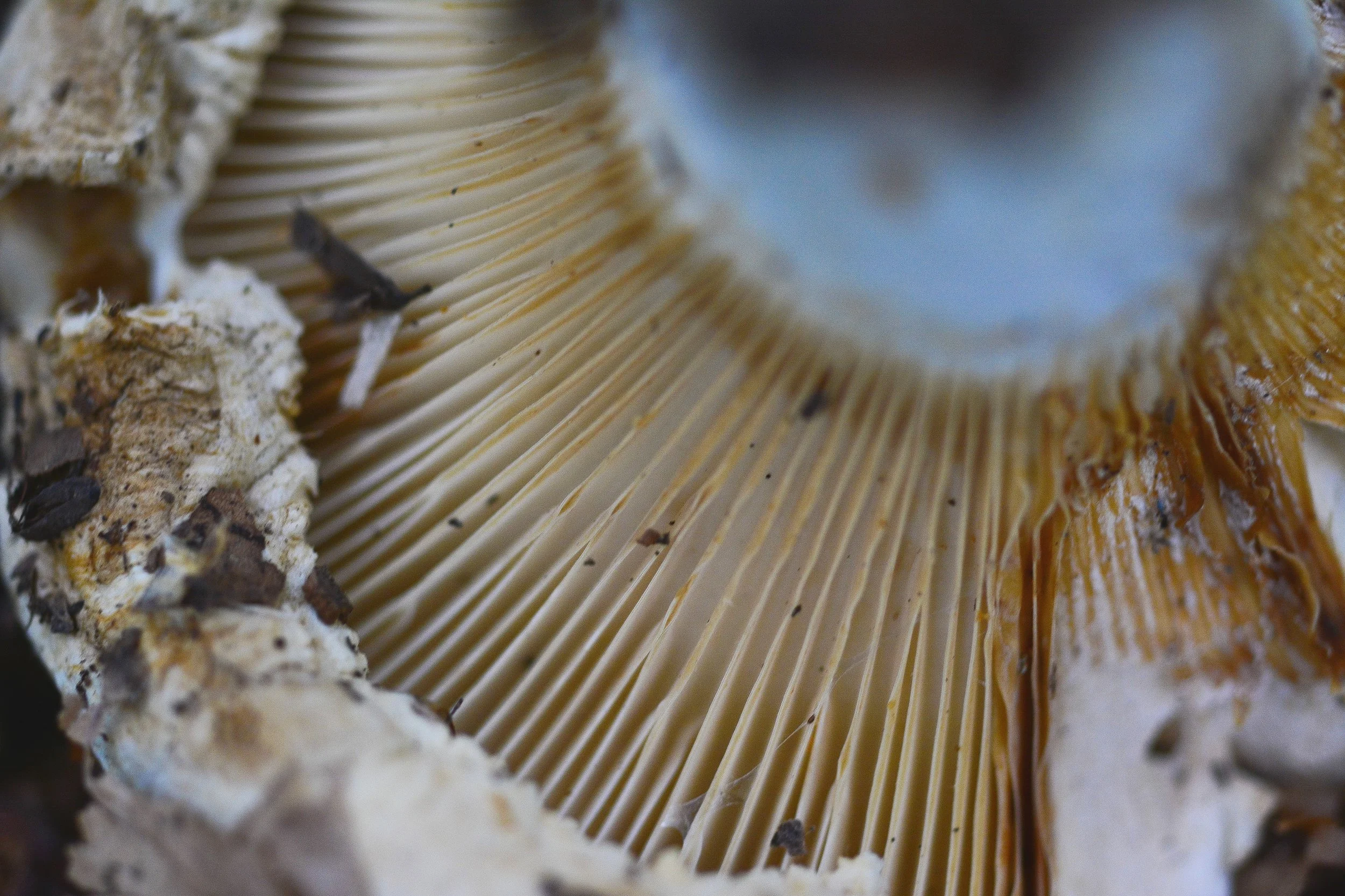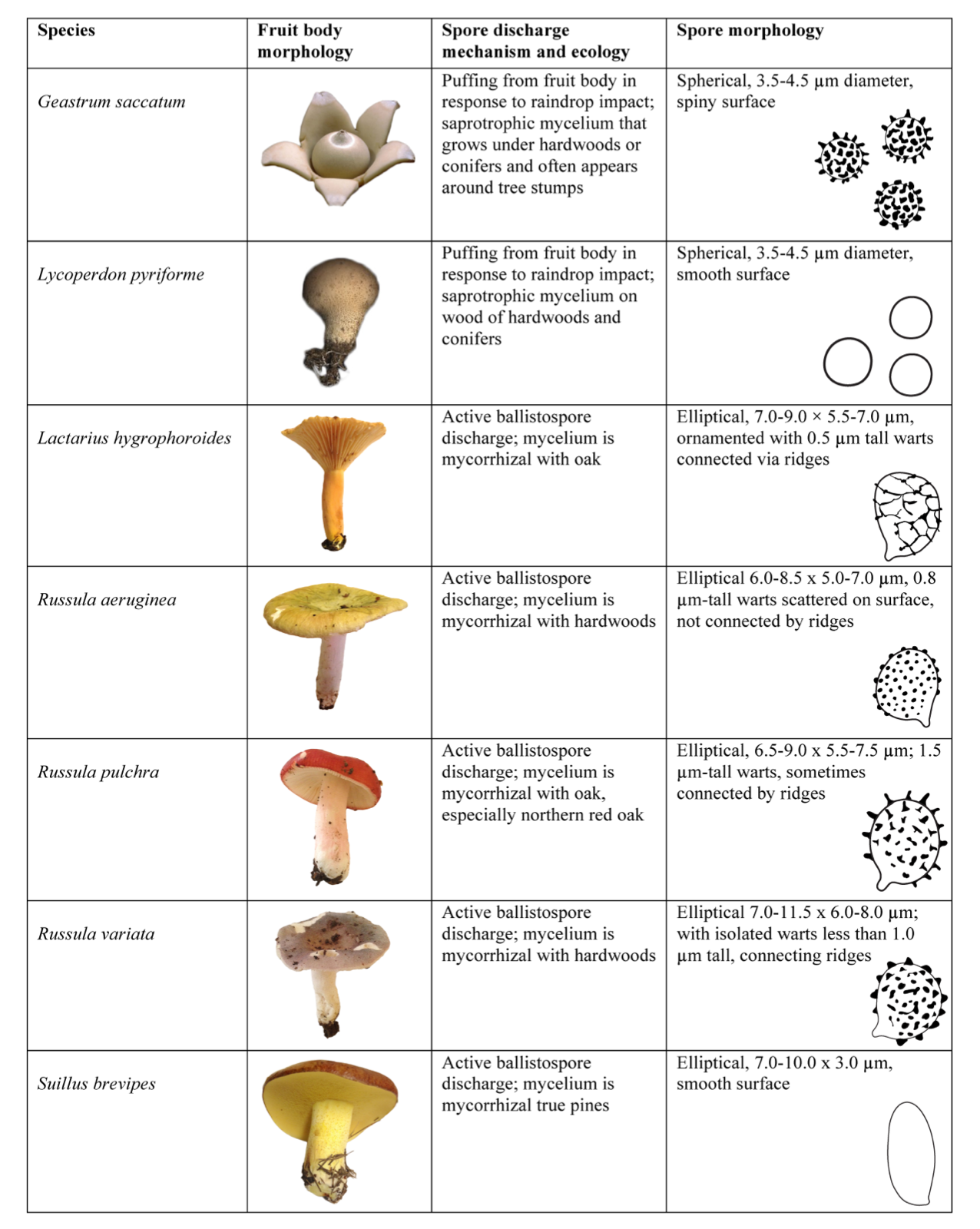A recent paper has revealed yet another ecological function fungal spores may provide, other than the passing of genetic information to subsequent generations. Maribeth Hassett and her team found that airborne spores released from higher fungi can actually kick start the cohesion of water vapor into water droplets on a massive scale. These fungal structures have been present in Earth’s atmosphere for over a billion years, and until now, may have been unknowingly driving rain events.
To understand how a fungal spore may act as a nucleus for condensation, we must first understand how these spores function inside of the fungus. Basidiospores released by gilled and poroid basidiomycete fungi have a fascinating mechanism of initial discharge. The Albert Einstein of mycology, A. H. R. Buller (1874–1944) first described this mechanism in 1922, nearly 100 years ago! First, a droplet of water forms on the slightly protruding hiller appendix. This appropriately named Buller’s droplet accumulates more and more water, while a separate droplet which is more like a blob of water also grows in size. When contact between the Buller’s droplet and the adaxial blob occurs, the water from the Buller’s droplet rushes over the surface of the spore and the spore’s center of gravity is rapidly manipulated. This change in center of gravity generates enough force to displace the spore from the basidium, where it can fall down the gill or pore surface to hopefully catch a rising air current.
It makes perfect sense why these researchers wanted to look closer at fungal spores even after their discharge. These structures have evolved to accumulate water so they could be actively released. Not only can a single fruiting body produce 30 billion spores a day, but using mannitol as a biotracer Elbert et al. (2007) estimated that 50 million tonnes of spores make it to Earth’s atmosphere every year! If you were wondering, mannitol is a sugar alcohol that is present in high quantities on fungal spores-the major source of atmospheric mannitol. With these numbers, and considering the mechanisms of spore release, one can see why these researchers wanted to understand how these fungal aerosols may interact with the environment on a larger scale.
For this study, seven different basidiomycete fungi where collected (see next picture for species and spore details). Using environmental scanning electron microscopy, these scientists found something rather remarkable. The airborne fungal structures collected from the gilled and poroid species had a specific effect on water condensation even after the spore is released from the mushroom. In a controlled chamber, the relative humidity was increased with a single spore being the focal point for the scanning electron microscope. For the first time, the Buller’s droplet and the adaxial blob was observed being formed after spore release. Unlike the spore within the fruiting body before its release, the environmental spores only formed water droplets on either the hiller appendix, or the adaxial surface. Water droplets never accumulate on these regions simultaneously after the spore is released into the environment. Interestingly, the spores from the puffball mushrooms interacted with water differently.
The fungi used in this study along with their spore's traits.
Instead of forming distinct droplets of water on one region of the spore surface, the ballistosporic basidiospores of L. pyriforme and G. saccatum condense water in a different fashion. Even though these spores that don’t require the formation of the Buller’s droplet for its dispersal, these ballistosporic spores form a sheath of water around its entire spore surface when the relative humidity increases from 100% to 102%.
The findings of this paper have serious ecological implications, especially during this present, anthropogenic time where more random weather patterns are predicted to ensue. It’s important to note that other biological aerosols like plant spores from lower plants and plant pollen from higher plants also may act on the atmosphere. Along with the millions of tonnes of fungal spores that make it to our atmosphere, these structures may have a significant function; the condensation of water in clouds and the growth of raindrops. It is pretty incredible that mushrooms, the organisms that depend on rain so much, may be indirectly enhancing rainfall events, by acting as a nucleus for raindrops. With the mushroom season right on our doorstep, it is simply fascinating to comprehend the positive feedback at play. The more undisturbed forest ecosystems we have, the more fruiting fungus you will find. With more mushrooms fruiting, more spores are produced, which may help enhance rainfall, which further increases the formation of fungi. Remember, for the next time a raindrop falls on your face, there’s a good chance you can thank our favorite organisms living from the forest floor.
[Link 1] [Link 2] [Link 3] [Link 4] [Link 5]






